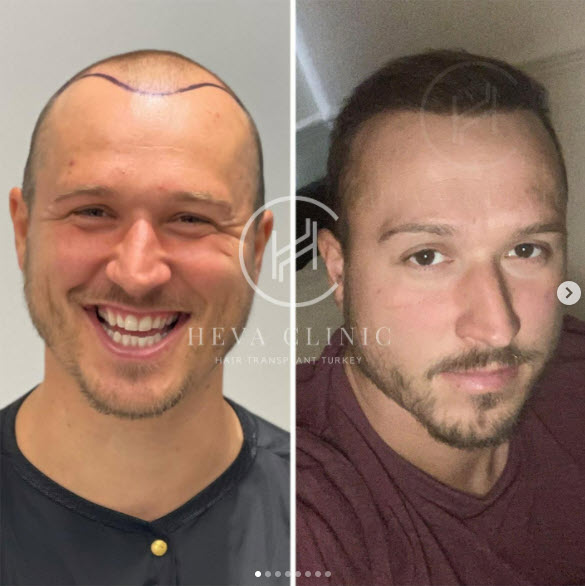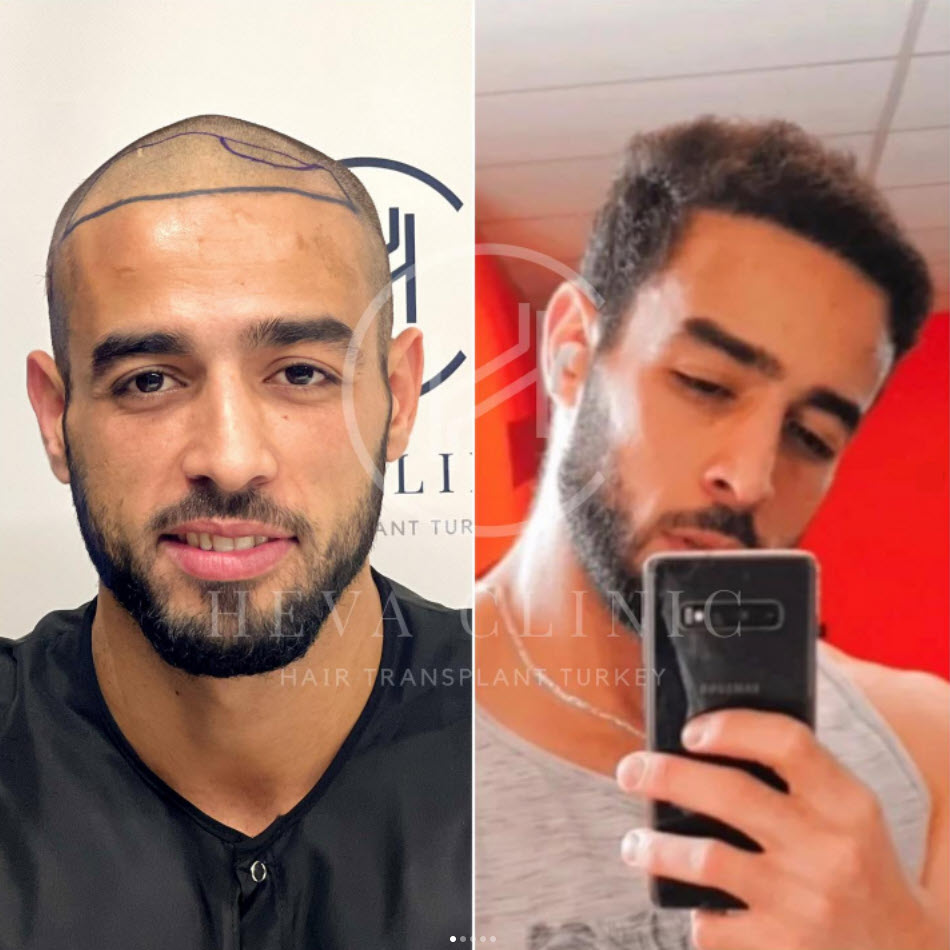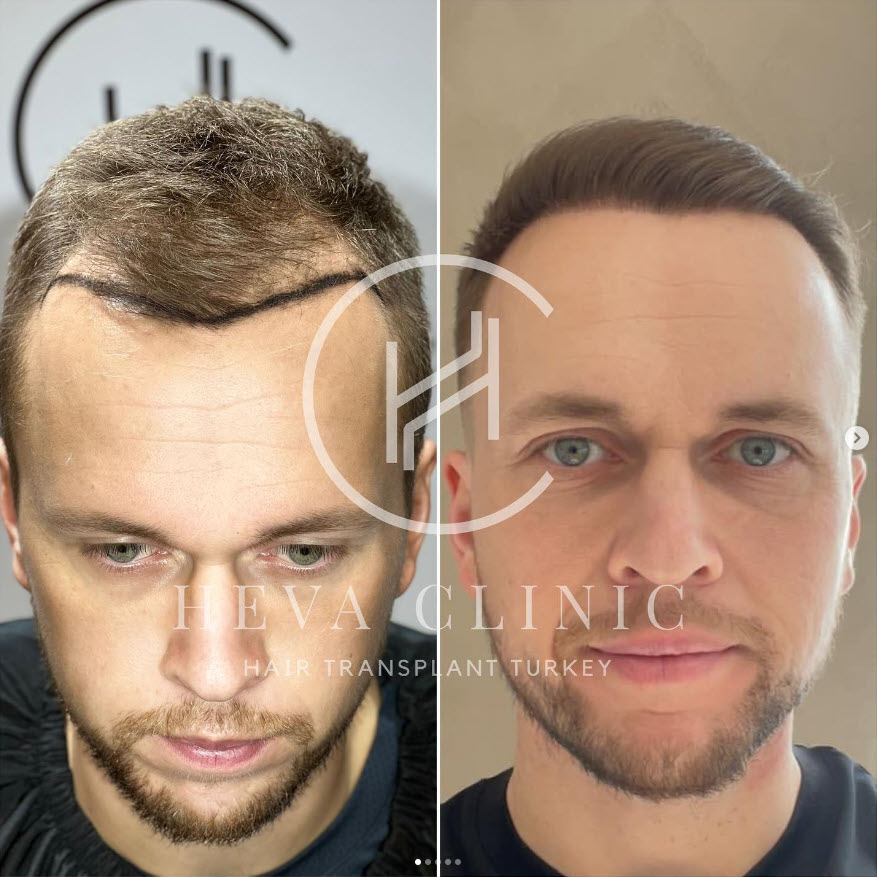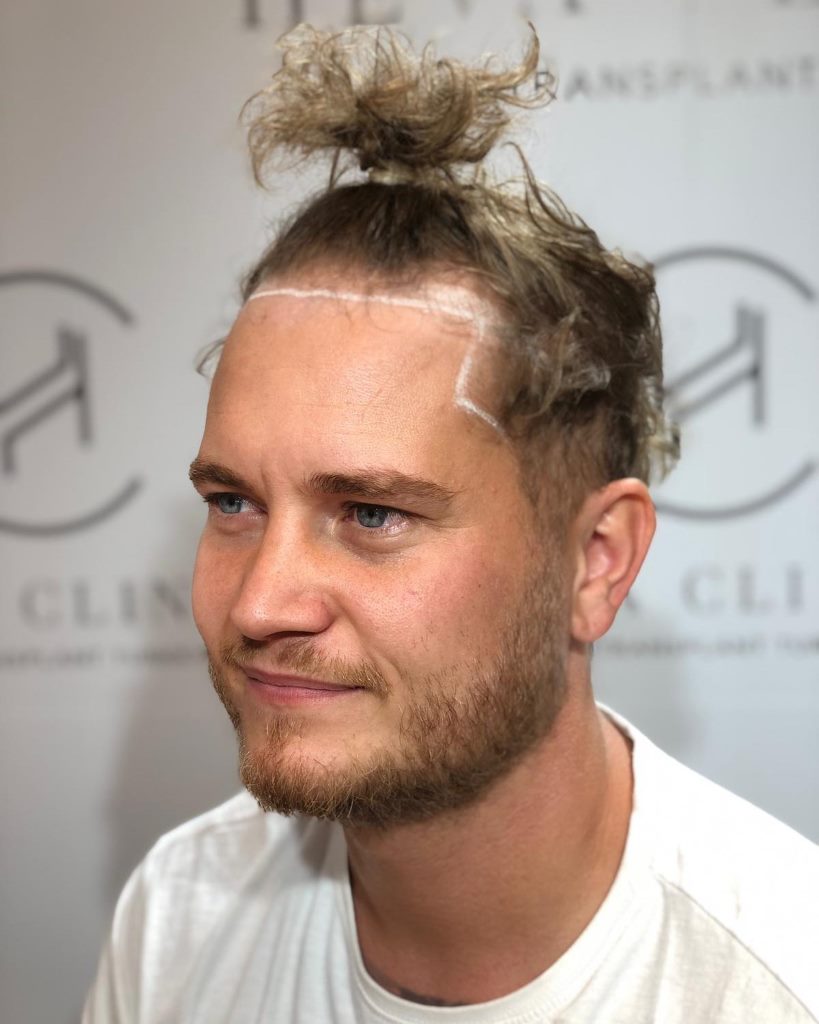
Hair transplant has become the most popular permanent solution for people who are unhappy with how their hair looks because of hair loss. If you are concerned about the condition of your hair, you will need to decide on what type of hair transplant and how many hair grafts you need to achieve a full head of hair.
2000 graft hair transplant is one of the most popular hair transplant options for a mild hair loss to restore the hairline and densify the hair. We have touched on the most important topics of the 2000 grafts hair transplant procedure to give you an idea. Keep on reading to decide whether you should start your hair transplant journey in Turkey.
Who needs 1500 grafts for hair transplant?
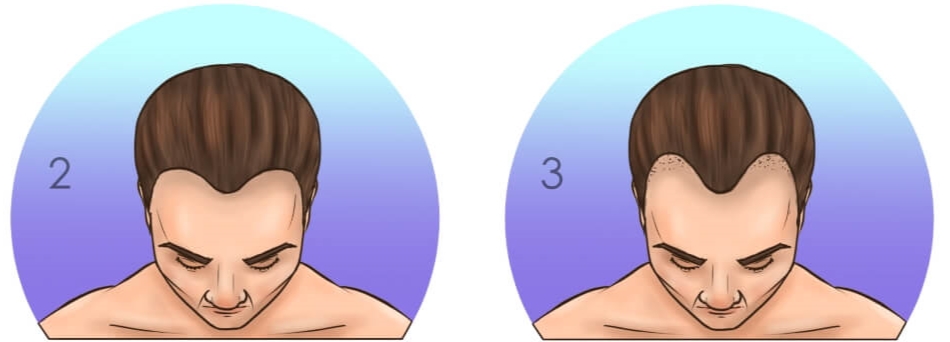
Dealing with hair loss can be frustrating, but the good news is that effective methods exist to treat it. One of the most helpful tools for deciding the best approach to hair loss treatment is the Norwood Scale. By estimating the number of grafts needed for an effective hair transplant based on your hair loss level, surgeons can provide tailored solutions for your specific needs.
According to the Norwood Scale, a person who requires 1500 grafts to treat hair loss falls at stage 2. At this point, the hair loss pattern and a minor recession of the hairline become slightly visible. Fortunately, individuals who match these requirements may benefit from a 1500-graft hair transplant without hair loss becoming more severe as it could lower a natural hairline just like a forehead reduction surgery.
Is 1500 grafts enough for the crown area?
Depending on the quantity and location of the hair loss, 1500 grafts may be adequate for crown area hair transplant. Surgeons typically recommend 800 to 1500 grafts to densify the hair loss in the crown (vertex) region.
However, it is better to consult with an expert for a more personal assessment. Please do not hesitate to contact our medical consultants for professional advice.
Is 1500 grafts enough for the temples?
If you are experiencing mild to moderate hair loss in the temples, 1500 grafts may be an effective solution to give you a more natural-looking hairline. Nevertheless, it’s never a bad idea to seek an expert’s opinion to get more precise information. Our medical specialists are always available to help and provide you with the best possible advice.
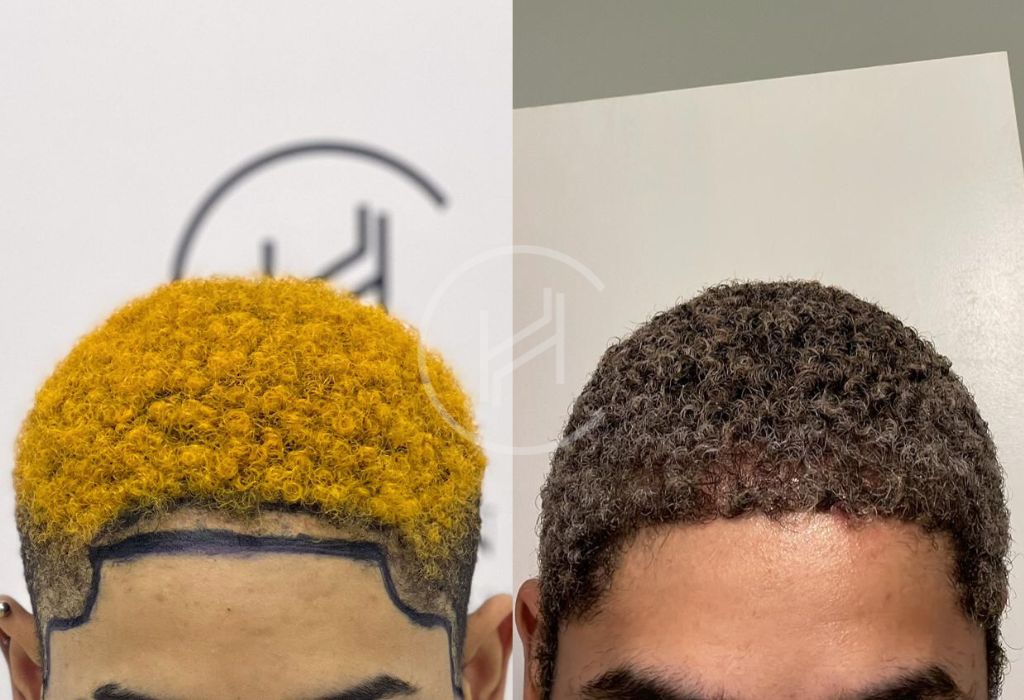
Which Techniques Are Used?
There are two most popular hair transplant methods available today: FUE and DHI. Both of these methods are based on the extraction of follicles individually. It’s important to note that the suitability of each method may vary depending on the thickness, texture, and density of your hair. Let’s look at each method to understand their differences and benefits.
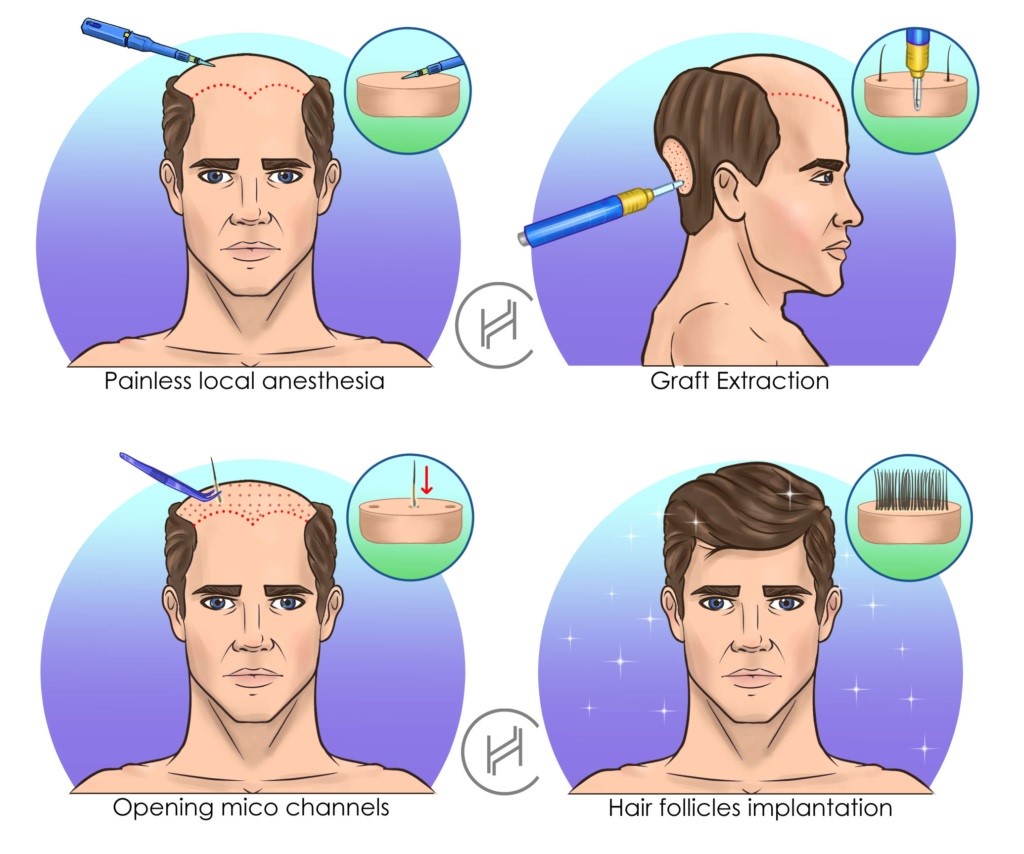
Which hair transplant technique is suitable for 2000 grafts hair transplant?
Today, follicular unit extraction (FUE) and direct hair implantation (DHI) methods are the most commonly used hair transplant methods. Deciding between these two options depend on the number of hair grafts, the nature of your hair, and the size of the donor and target area.
Even though both techniques are suitable for 2000 grafts hair transplant, the DHI technique can be used to provide significant volume at the frontal hairline. Because the hair loss is at the early stages, the DHI technique can offer full control over the finished result with fewer hair grafts.
You can consult with our medical team to decide on the best suitable methods for your hair transplant surgery.
The FUE method is the most popular hair transplant method in the world. As the name implies, this method is based on individually extracting follicular units, making it a more precise and effective procedure. Once the grafts are collected, they are stored in an appropriate environment while the surgeon prepares the recipient area by creating microchannels. The advantage of this method is that surgeons can cover a wider area, allowing more hair to be transplanted in a single session. Consequently, patients require fewer sessions, making the process less time-consuming. The FUE method is an excellent choice for those seeking a safe and efficient hair transplant procedure.
The DHI method is very similar to the FUE method, which involves taking out individual hair cells. But these advanced methods are different in two important ways. The Choi Pen is a unique tool used for extraction and insertion in the DHI method. With this tool, you don’t have to make microchannels, a step needed for FUE. Because the Choi Pen needs more precision and control, the DHI process may take longer than FUE. Though this is the case, the lack of microchannels makes DHI’s downtime quicker. It’s impressive that DHI makes it possible to transfer 1,500 grafts in a single session.
Can I get an unshaven 1500 grafts hair transplant?
As the number of grafts you require is relatively less, you might consider undergoing an unshaven hair transplant. This innovative method permits a lower graft count while ensuring a more subtle and almost imperceptible outcome. By using this cutting-edge technique, it is possible to flawlessly integrate transplanted hair without shaving. Consequently, the final result is a natural-looking, discreet outcome that blends in seamlessly with your natural hair, making the entire procedure undetectable to onlookers.
How much does 1500 grafts hair transplant cost in the world?
As you consider getting a hair transplant, it’s important to keep in mind that for most countries, the cost of the procedure is mainly determined by the cost per graft. This cost can vary depending on several factors such as exchange rates, cost of living, etc. For instance, in the UK, the cost for each graft may run around £4, while in the USA, it may cost $2.5 to $5.
On average, 1500 hair transplant grafts may cost around £5,500-£7,000 in the UK.
1500 hair transplant grafts may cost around $4,000-$8,000 in the US.
However, it’s important to note that these prices may vary depending on the clinic’s location, surgeon’s expertise, and method utilized for the procedure.
Furthermore, it’s essential to be aware of the additional costs such as accommodation, transportation, and aftercare since some countries don’t provide package deals. Therefore, doing your research before settling down for a place to get a hair transplant is crucial. By taking the time to research and compare different options, you can ensure that you make an informed decision and get the best value for your money.
How much does 1500 grafts hair transplant cost in Turkey?
Thanks to the low exchange rate and the low cost of living, Turkey offers budget-friendly costs for these procedures. In addition, Turkey provides a wide range of all-inclusive packages that have everything you’ll need for the procedure, making it the first choice for many people.
The cost of 1500 grafts on average ranges between $2,500 and $4,000 in Turkey depending on the location of the clinic. Feel free to reach out to our medical consultants for detailed information about the procedure.
How long does 1500 grafts hair transplant operation take?
A 1,500 grafts hair transplant may take around 3-5 hours, which is relatively less than the average hair transplant procedure. However, it is important to note that the duration of the procedure can be affected by several factors such as the location of the donor area, density of hair grafts, and hair loss pattern.
Despite the length of the procedure, there is no need to worry because the local anesthesia used during the procedure will minimize any discomfort or pain.

Frequently asked questions
Most people have a lot of questions in mind about the hair transplant procedure. Here are the answers to some frequently asked questions. For further information and complex questions regarding your specific surgery, you can consult with your surgeon at Heva Clinic.
1,500 grafts hair transplants can easily be accomplished in a single session so you can experience the benefits of hair transplant without having to undergo multiple procedures.
Turkey is an excellent option for getting a hair transplant as long as you choose an accredited hair transplant clinic. The country not only is it completely safe and regulated, but Turkish law also requires health centers to carefully select their partners and adhere to the rules set by the Ministry of Health, ensuring that the standard of healthcare facilities remains high.
Therefore, you can trust that the process will be conducted professionally and safely, giving you the peace of mind you need during the procedure.
Once the procedure is done, the medical team will conduct the first wash at the clinic the day after. It is important to follow the washing instructions provided by the medical team and wash your hair once or twice a day during the first two weeks.
During the first week, patients may experience swelling, redness, and bruising. These symptoms will usually disappear within a week. Scabbing may start to occur between 10-14 days, which is an indication of recovery. It is important to use medical shampoo and foam properly to enhance the descabbing process.
After two weeks, shock loss is quite normal in the scope of growth cycle. Patients need not worry as hair follicles will grow stronger and denser than ever. It takes around 2-3 months after the hair transplant for transplanted hair to start growing. During this phase, hair keeps growing and the growth can be observed week by week.
It takes 10 days to get back to your normal life after hair transplant, and it takes 10-12 months to see the final & complete results.
Hair grafts greatly influence the success rate of a hair transplant, and they are an essential component in the procedure. A hair graft is a follicular unit that contains anywhere between 1-4 hair follicles. On average, a single hair graft consists of 1.8-2.2 hair follicles. With 1,500 grafts hair transplant, around 2,700-3,300 hair follicles can be transplanted.
However, this number may vary depending on several factors such as the thickness, texture, and density of the hair follicles that are being transplanted.

